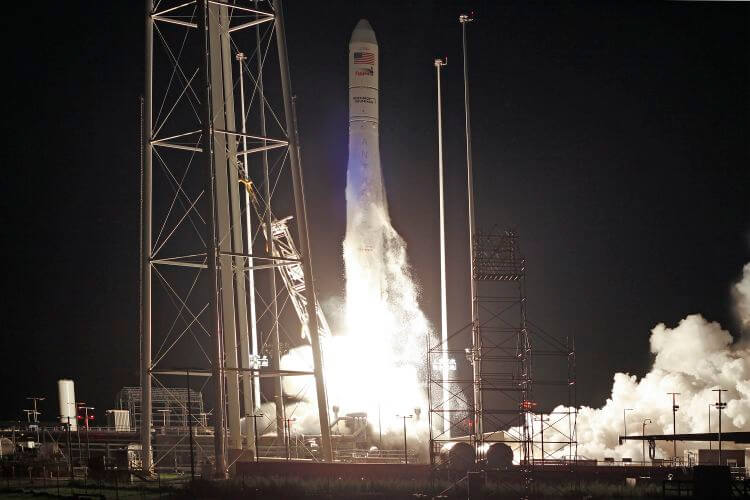After thirteen Cygnus launches to the International Space Station, Northrop Grumman's largest launcher will be replaced by the Antares 300, entirely "Made in America".
A short career
On August 2 at 3:55 UTC from the Wallops Island regional spaceport in Virginia, Northrop Grumman launched for the thirteenth and final time its Antares 200 launch vehicle, which entered service in October 2016 as the successor to the Antares 100 (originally named Taurus 2 during its development by Orbital Science).
The latter had been used on five occasions, between April 2013 and October 2014, to ship Cygnus refueling cargo ships to the International Space Station, suffering a failure on its last liftoff.
Antares 200 has been declined in two versions, 230 (5 flights) and 230+ (8 flights), capable of embarking up to 8 t into low-Earth orbit (for a takeoff mass of 298 t and a height of 42.5 m), at an estimated cost of between $80 and $85 M.
The 230 and 230+ versions of the medium launcher (Northrop Grumman's largest) boast a 100 % success rate.
Freedom from a Russian-Ukrainian supply chain
The shutdown of the Antares 200, after a seven year career, is directly linked to the fact that its first stage was manufactured in Ukraine (by Pivdenne Design Office and Pivdenmash), and equipped with two Russian RD-181 engines (supplied by NPO Energomash).
His replacement will be the Antares 300, powered by seven Miranda engines from Californian startup Firefly Aerospace, a deal formalized in August 2022 (six months after Russia's invasion of Ukraine).
But the inaugural flight, which last year was scheduled for October 2024, won't come until summer 2025.
In the meantime, an agreement has been reached with SpaceX (also in August 2022) for three Cygnus to be delivered to the ISS by Dragon CRS.
The first of these, Cygnus NG 20, is due to be launched using the Falcon 9 this December.
The Cygnus NG 19
For its latest mission, the Antares 230+ carried the Cygnus NG 19, loaded with 3 729 kg of cargo, including three cubesats.
The tanker was named S.S. Laurel Clark, in memory of the American astronaut killed twenty years ago (on February 1, 2003) in the disintegration of the shuttle Columbia on its return to Earth.
As has been the case since the inception of the Cygnus program (with a first contract signed in 2009), the pressurized part of the freighter was built in Italy by Thales Alenia Space.
This was the fourteenth example of the " Enhanced " version of the Cygnus, with an increased size.
In the space of ten years (the first freighter to reach the ISS was the Cygnus Orb-D1, in September 2013), Orbital Sciences, Orbital ATK and then Northrop Grumman Innovation Systems were able to deliver around 45 t of supplies,
Découvrez cet article sur Air&Cosmos

